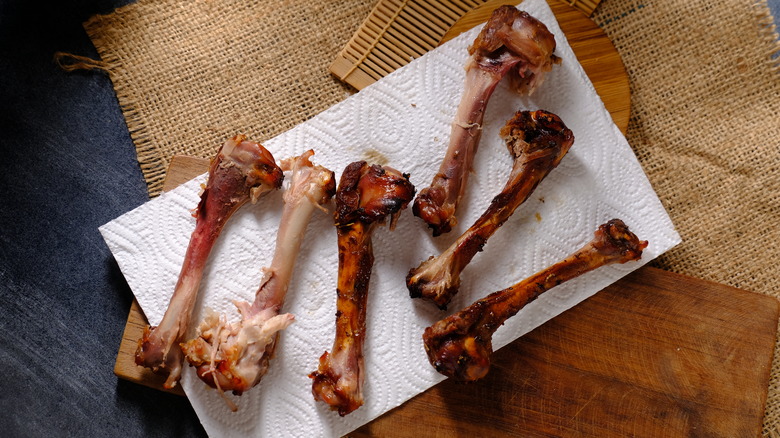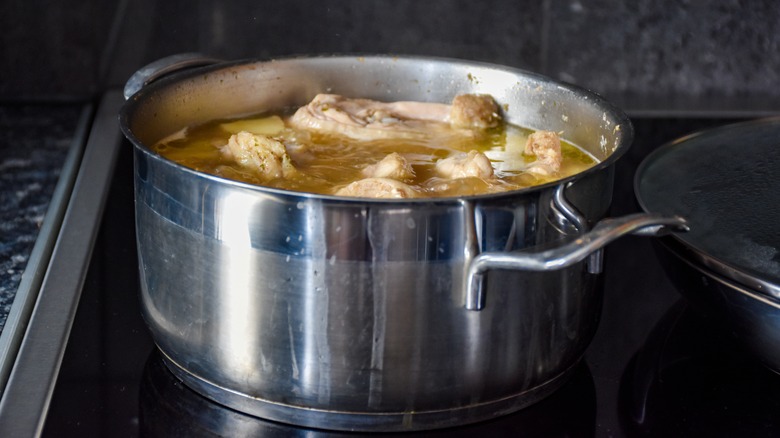What To Keep In Mind When Simmering A Whole Chicken For Soup
Using the remnants of a whole chicken to make a basic chicken stock is a brilliant way to not only upgrade your chicken soup, but as an easy step to take in getting the most out of your food budget. After just one time letting that whole chicken cook down and simmer away on the stove, filling the house with the delicious smells that promise a hearty classic chicken soup — or an incredible upgrade, like a Thai coconut chicken soup – you'll never throw those bones away again. But there is something important to keep in mind.
It doesn't take long for the chicken to start to fall apart, and although every part of the carcass is invaluable in creating that rich, flavorful stock, you do have to be very, very careful about bones. As the chicken simmers, small bones can be easily overlooked amid other pieces of meat and skin, and if they make their way into the soup, they can be dangerous.
Chicken bones are small, brittle, and can easily break into sharp shards. Swallowing a chicken bone or even a piece of bone can have a range of consequences, from passing uneventfully through the digestive system to requiring surgery to remove the bone. Stock is delicious, but it's important to take proper precautions during prep.
What are the dangers of swallowing chicken bones?
There are a lot of rotisserie chicken myths that you should definitely stop buying into, like the oft-repeated but debunked notion that these conveniently pre-cooked birds are made from chickens that are approaching the end of their shelf life. The dangers of swallowing chicken bones are, however, very real, and experts warn that not only are they choking hazards, but they can also lead to complications like a punctured esophagus, intestines, or bowels.
Swallowing a chicken bone can mean a few things, starting with a trip to the emergency room and x-rays to determine just how serious things are going to get, where the bone is lodged, and whether or not surgery is going to be required to remove it. Just what happens varies based on the circumstances: While some bones will pass harmlessly, others can cause serious health problems and in some cases, it can be life-threatening.
Here's how to make sure your stock is bone-free
Turning a whole chicken into stock is pretty straightforward, but there are some steps that you shouldn't skip. When it comes to making sure your soup is going to be bone-free, there's a few things you can do.
After your stock is done simmering, you should definitely run the entire pot through a mesh strainer or a colander, but as an extra precaution, line the colander with cheesecloth before straining. You could also opt for taking a few extra steps that will not only help you make sure you're getting rid of all the bones and bone fragments, but that you're removing other impurities that can make for cloudy liquid. Strain your broth several times with increasingly fine meshes. Start with a colander, then run the broth through a metal strainer, then use ultra-fine materials like a brew bag or a muslin bag.
Alternately, you might want to consider using cheesecloth from the beginning. Instead of putting your whole chicken in the pot alone to let it fall apart into the stock, wrap it in a muslin or cheesecloth bag. Once it's done simmering, you can just remove the bag, pick any loose pieces of meat off the carcass, and make sure you're not adding any bones into your delicious stock.


